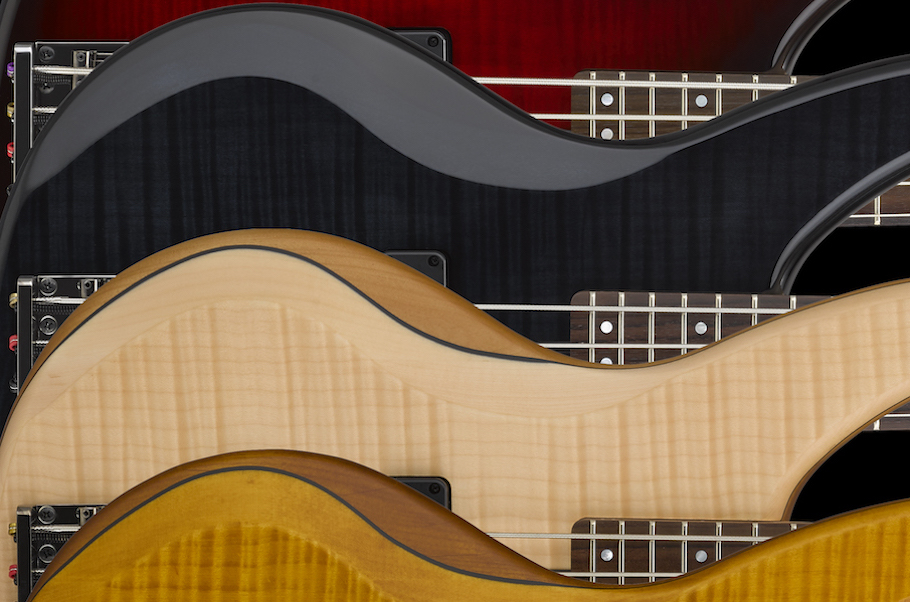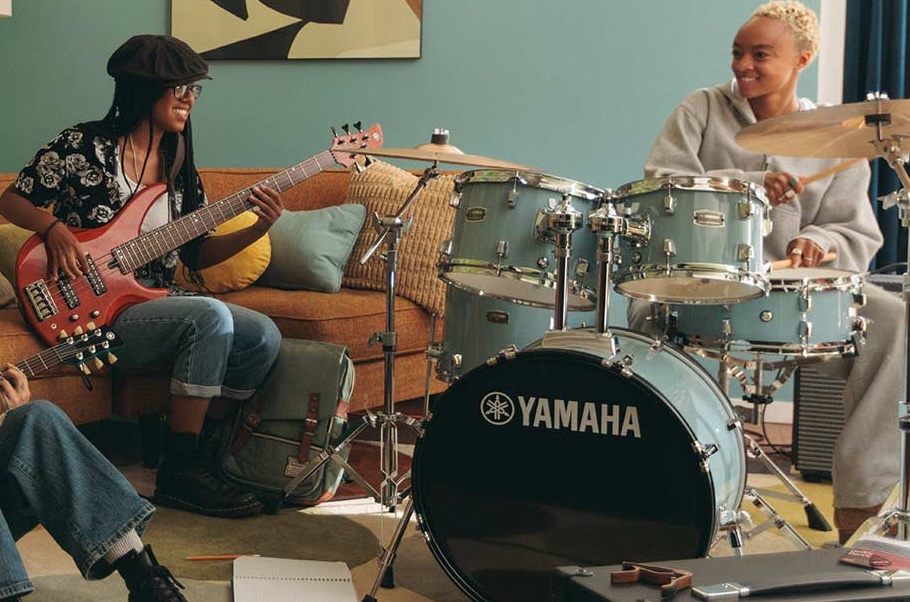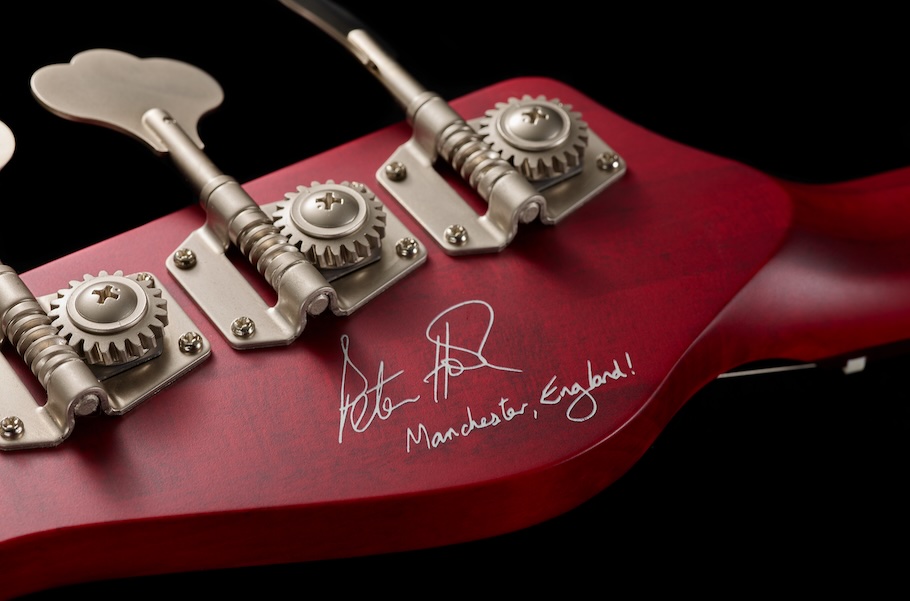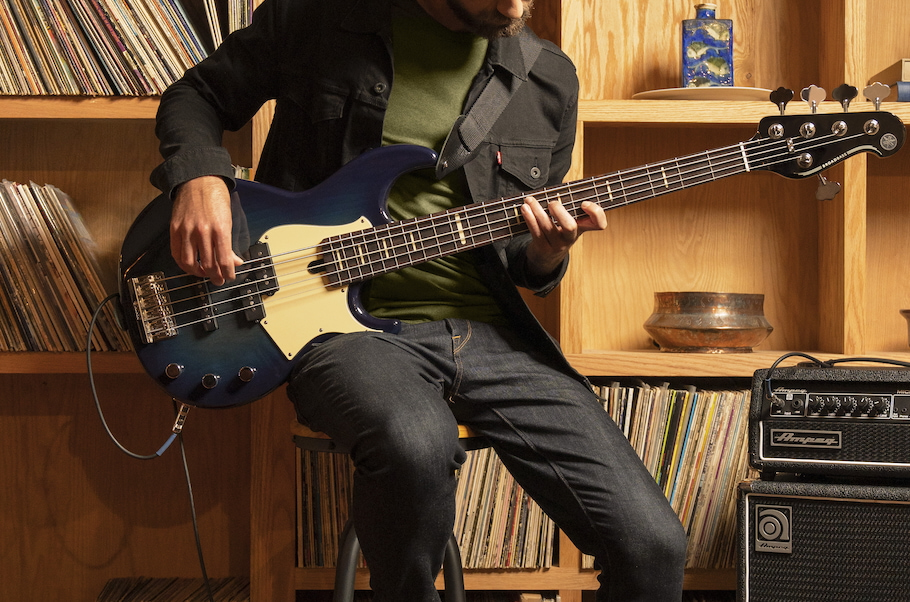A Bassist’s Guide to Modes, Part 1
How to get maximum mileage from scales.
Modes are essentially scales, but when we talk about modes, we’re talking about notes in relation to a key. If you’re playing in the key of G, for example, the G major scale is the first mode; if you play the same notes beginning and ending on A, you’re now in the second mode. There are seven modes in the major scale — one for each note in the scale — and even though you’re playing the same notes (G – A – B – C – D – E – F# – G) in each mode, they have a slightly different sound because it starts on a different root.
THE MAJOR MODES
One of the easiest ways to understand the modes is to group them in terms of major, minor and diminished. The Ionian mode, the Lydian mode and the Mixolydian mode are all based on the major triad (root, major third and fifth), so they are the three major modes. In the key of G, that’s G Ionian (the G major scale, starting on G), C Lydian (the G major scale, starting and ending on C), and D Mixolydian (the G major scale, starting and ending on D). When played as scales, they all share the root, major third, and fifth.
THE MINOR MODES
The Dorian, Phrygian, and Aeolian modes are based on the minor triad (1 – ♭3 – 5), so they are the minor modes. In the key of G, that’s A Dorian (the G major scale starting and ending on A), B Phrygian (the G major scale starting and ending on B) and E Aeolian (the G major scale starting and ending on E). Aeolian mode, which we call the minor scale, is the most common; if you hear the phrase “relative minor,” it refers to the key’s Aeolian mode — E Aeolian (also known as E minor) is the relative minor of G major, and G major is the relative major of E minor.
THE DIMINISHED MODE
The seventh mode of the scale, called the Locrian mode, is neither major nor minor. It starts like a minor triad with a root and a minor third, but the fifth is a half-step flat, so it’s called a diminished triad. In the key of G, that’s F# Locrian.
Now that we’ve established the general concept, let’s take a closer look at these seven modes individually.
IONIAN MODE
The first mode, Ionian, is simply the major scale. The illustration below shows a two-octave G major scale that puts all four strings under your fingers.

It’s easy to think of each mode as an isolated piece of information, but one of the best ways to hear how they’re related is to play them against a drone. Here’s the Ionian mode played against the G drone we’ll include in each of the following examples:
As you can hear in this next audio clip, it can be fun to groove with the Ionian mode too.
DORIAN MODE
The second mode, Dorian, starts on A. In G, the Dorian mode consists of the notes A, B, C, D, E, F#, G and A.

Notice how the sixth (in this case, F#) is a half-step sharper than it would be in a minor scale; that’s what gives Dorian mode its distinctive sound. Jazz musicians frequently substitute Dorian mode for the minor scale.
Here’s an example of a Dorian groove in A:
PHRYGIAN MODE
In the key of G, the third mode, Phrygian, uses the notes B, C, D, E, F#, G, A and B.

Phrygian mode sounds different than Aeolian or Dorian because the second scale degree is flat — the root and the second note in the scale are only a half-step apart.
As you can hear in the audio clip below, that “flat 2” gives the Phrygian mode a flavor associated with metal and non-Western traditions such as Arabic music and flamenco.
LYDIAN MODE
If we start on the fourth note of the G major scale, C, we get Lydian mode. The notes are C, D, E, F#, G, A, B and C.

Notice that Lydian mode sounds like the major scale (Ionian mode) except for the fourth degree (in this case, F#), which is augmented (a half-step sharp). Jazz musicians often substitute Lydian mode for the major scale to create a brighter, more modern sound.
A Lydian groove can emphasize the sharped fourth that gives this mode its flavor.
MIXOLYDIAN MODE
The fifth mode of G, Mixolydian, starts on D. The notes in D Mixolydian are D, E, F#, G, A, B, C, and D.

Mixolydian mode is a major scale with a flatted seventh. (In the key of G, Mixolydian starts on C.) If you’ve listened to the blues or heard of the dominant scale, you’ll probably recognize its sound.
As you can hear, that flatted seventh is an important part of the Mixolydian sound:
AEOLIAN MODE
The sixth mode, Aeolian, is the same as the minor scale. In the key of G, it starts on E. The notes are E, F#, G, A, B, C, D and E. Let’s use the open E and A strings for this two-octave exercise, as shown below.

We know this sound and the shape as the minor scale.
Minor-key grooves are common in R&B, rock, soul and many other genres.
LOCRIAN MODE
In the key of G, the seventh mode, Locrian, starts on F#. The notes are F#, G, A, B, C, D, E and F#.

Locrian mode is usually considered dark, dissonant and mysterious. It’s like Aeolian mode with a flatted fifth (in this case, C instead of C#).
Here’s how Locrian mode sounds against a sustained G drone:
PRACTICE MAKES PERFECT
The best way to feel what modes do is to play along. Here’s a G drone with a beat you can use to explore each mode; notice what sounds good and what clashes against that sustained G:
There are hundreds of scales, and each one has modes, but the modes built on the major scales are the best known and most-often used. Learning to play the major scale modes in every key will help you train your ears and learn your fretboard, and it’ll come in handy for songwriting, improvising and soloing.
In Part 2, we’ll explore four additional scales — pentatonic, melodic minor, harmonic minor and symmetrical diminished — and the modes they engender.
Note: All audio clips played on a Yamaha BBP35 bass.















